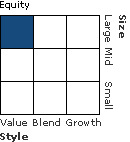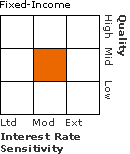| Federated Hermes Managed Volatility II P |
|
 |
|
| Release date as of 2025-09-30. Data on page is subject to change. |
|
|
Overall Morningstar
Rating™
|
| What is this?
|
|
 |
| As of 2025-09-30 |
|
Out of 224
Tactical Allocation Funds
|
|
|
|
Morningstar®
Style Box™
|
| What is this?
|
|
 |
|
| As of 2025-06-30 |
|
 |
|
| As of 2025-03-31 |
|
|
| Total Fund Assets ($ Mil) |
| 176.34 |
|
|
|
| Investment Objective & Strategy |
|
| The investment seeks high current income and moderate capital appreciation.
|
|
| The fund invests in both equity and fixed-income securities that have high income potential. The analysis seeks to identify securities likely to have predictable returns based on a number of strategies such as valuation, market sentiment, profitability and capital use. It may buy or sell foreign currencies or foreign currency forwards in lieu of or in addition to non-dollar denominated fixed-income securities in order to hedge or increase or decrease its exposure to foreign interest rate and/or currency markets. |
|
|
| Morningstar Category: Tactical Allocation |
|
| Tactical Allocation portfolios seek to provide capital appreciation and income by actively shifting allocations across investments. These portfolios have material shifts across equity regions, and bond sectors on a frequent basis. To qualify for the tactical allocation category, the fund must have minimum exposures of 10% in bonds and 20% in equity. Next, the fund must historically demonstrate material shifts in sector or regional allocations either through a gradual shift over three years or through a series of material shifts on a quarterly basis. Within a three-year period, typically the average quarterly changes between equity regions and bond sectors exceeds 15% or the difference between the maximum and minimum exposure to a single equity region or bond sector exceeds 50%.
|
|
|
| There are no additional fund specific investment risks (e.g. liquidity risk, currency risk, foreign investment risk, etc.) associated with this fund beyond the normal risks generally associated with investing in a mutual fund. |
|
|
|
% of Net Assets |
|
| U.S. Stocks |
44.6 |
|
| Non-U.S. Stocks |
2.4 |
|
| Bonds |
47.7 |
|
| Cash |
2.5 |
|
| Other |
2.8 |
|
|
| Total |
100.0 |
|
|
|
|
|
Data through
2025-06-30 |
|
|
|
|
| Morningstar Equity Sectors |
|
|
|
% of Stocks |
 |
Cyclical |
32.98 |
 |
Basic Materials |
3.00 |
 |
Consumer Cyclical |
7.88 |
 |
Financial Services |
18.54 |
 |
Real Estate |
3.56 |
|
|
|
 |
Sensitive |
44.18 |
 |
Communication Services |
7.54 |
 |
Energy |
5.33 |
 |
Industrials |
11.60 |
 |
Technology |
19.71 |
|
|
|
 |
Defensive |
22.83 |
 |
Consumer Defensive |
7.28 |
 |
Healthcare |
12.35 |
 |
Utilities |
3.20 |
|
| Data through 2025-06-30 |
|
|
|
| Morningstar Fixed-Income Sectors |
|
| % Fund |
 |
Government |
64.41 |
 |
Corporate |
17.36 |
 |
Securitized |
14.25 |
 |
Municipal |
0.00 |
 |
Cash & Equivalents |
3.98 |
 |
Derivative |
0.00 |
|
|
|
% Bonds |
| AAA |
2.30 |
| AA |
66.10 |
| A |
9.00 |
| BBB |
13.80 |
| BB |
1.50 |
| B |
1.50 |
| Below B |
0.60 |
| Not Rated |
5.20 |
|
|
|
|
|
| Total Number of Stock Holdings |
327 |
| Total Number of Bond Holdings |
306 |
| % of Net Assets in Top 10 Holdings |
60.22 |
|
|
| Turnover % |
(as of 2024-12-31) |
69.00 |
| 30 Day SEC Yield % |
2.32 |
|
|
Sector |
Country |
Maturity Date |
Market Value ($000) |
% of Net Assets |
|
| 2 Year Treasury Note Future Sept 25 |
--- |
USA |
2025-09-30 |
28,499 |
13.97 |
| 10 Year Treasury Note Future Sept 25 |
--- |
USA |
2025-09-19 |
-25,004 |
12.26 |
| Federated Mortgage Core Portfolio |
--- |
USA |
--- |
19,749 |
9.68 |
| Future on E-mini S&P 500 Futures |
--- |
USA |
2025-09-19 |
18,761 |
9.20 |
| Us 5yr Note (Cbt) Sep25 Xcbt 20250930 |
--- |
--- |
2025-09-30 |
9,156 |
4.49 |
 |
| Federated Project and Trade Fin Cor |
--- |
USA |
--- |
5,753 |
2.82 |
| United States Treasury Notes 4.125% |
--- |
USA |
2032-03-31 |
4,640 |
2.27 |
| United States Treasury Notes 2.75% |
--- |
USA |
2027-07-31 |
4,068 |
1.99 |
| United States Treasury Notes 2.625% |
--- |
USA |
2027-05-31 |
3,721 |
1.82 |
| United States Treasury Notes 4.625% |
--- |
USA |
2035-02-15 |
3,508 |
1.72 |
 |
|
 |
|
|
|
|
|
| Short Sale, Credit and Counterparty, Extension, Prepayment (Call), Currency, Emerging Markets, Foreign Securities, Loss of Money, Not FDIC Insured, Country or Region, Quantitative Investing, Value Investing, Interest Rate, Market/Market Volatility, Equity Securities, High-Yield Securities, Other, Restricted/Illiquid Securities, Underlying Fund/Fund of Funds, Derivatives, Leverage, Management, Mid-Cap, Large Cap |
|
| Show Risk Definitions |
|
|
| Inception Date: 1994-02-10 |
|
| Jerome D. Conner (2014-04-08) |
|
| Jerome D. Conner, CFA, is a portfolio manager at Federated Investment Management Company focusing on asset allocation, interest rate strategy and security selection. He has been with Federated Investment Management Company since 2002; has worked in investment management since 1995; has managed investment portfolios since 2010. Education: B.S., U.S. Naval Academy; M.S., Boston University. |
|
| Ian L. Miller (2017-04-30) |
|
| Mr. Miller joined Federated in January 2006 as a Quantitative Analyst. ; has worked in investment management since 2006; and has managed investment portfolios since 2012. Miller earned a B.S. in Molecular Biology from Clarion University and an M.S. in Biotechnology from The John Hopkins University. |
|
| Damian M. McIntyre (2015-04-30) |
|
| Damian McIntyre, CFA, FRM, CAIA, Vice President, Senior Portfolio Manager, Senior Quantitative Analyst, Head of Multi-Asset Solutions Team. Responsible for portfolio management and quantitative research and analysis on the Multi-Asset Solutions and Enhanced Index Teams, as well as helping to formulate Federated Hermes’ views on the economy, the financial markets and the firm’s investment positioning strategies as a member of the Macro Economic Policy and PRISM Asset Allocation committees. B.S., M.B.A., Carnegie Mellon University. Professional Affiliation: Member, CFA Society of Pittsburgh; Certified Financial Risk Manager; Chartered Alternative Investment Analyst; Financial Risk Manager; Fundamentals of Sustainability Accounting Credential Holder. Joined Federated Hermes 2008. |
|
| Dana L. Meissner (2020-04-30) |
|
| Dana L. Meissner, CFA, FRM and CAIA, Senior Portfolio Manager, has been the Fund’s portfolio manager since April 2020.
Mr. Meissner is jointly responsible for the day-to-day management of the Fund. He has been with the Adviser or an affiliate since 2000;
has worked in investment management since 2000; and has managed investment portfolios since 2009. Education: M.S.I.A., Carnegie Mellon University; M.S. and B.S., University of Toledo. |
|
| Brian Smalley (2024-04-30) |
|
| Brian Smalley, Vice President, Portfolio Manager, Senior Investment Analyst. Responsible for portfolio management and fundamental analysis on the Alternative Equity Team. Previous associations: Associate Portfolio Manager, Fixed Income Managed Accounts, Federated Hermes; Portfolio Manager, Merus Capital Partners; Portfolio Manager, G2 Trading; Trader, Helios Partners; Portfolio Manager, First New York Securities. B.S., Carnegie Mellon University; M.B.A., Tepper School of Business, Carnegie Mellon University. FSA (Fundamentals of Sustainability Accounting) Credential Holder. Joined Federated Hermes 2014. |
|
|
|
| Federated Investment Management Company |
| Federated Equity Mgmt Co. Of Penn |
|
|
|
|
|
|
|
|

© Copyright 2025 Morningstar, Inc. All rights reserved. Morningstar, the Morningstar logo, Morningstar.com, Morningstar Tools are either trademark or service marks of Morningstar, Inc. The information contained herein: (1) is proprietary to Morningstar and/or its content providers; (2) may not be copied or distributed; and (3) is not warranted to be accurate, complete or timely. Neither Morningstar nor its content providers are responsible for any damages or any losses arising from any use of information. Past performance is no guarantee of future performance. |
|
Past performance is no guarantee of future results.
Returns will vary and shares may be worth more or less than their original cost when sold.
|
|























